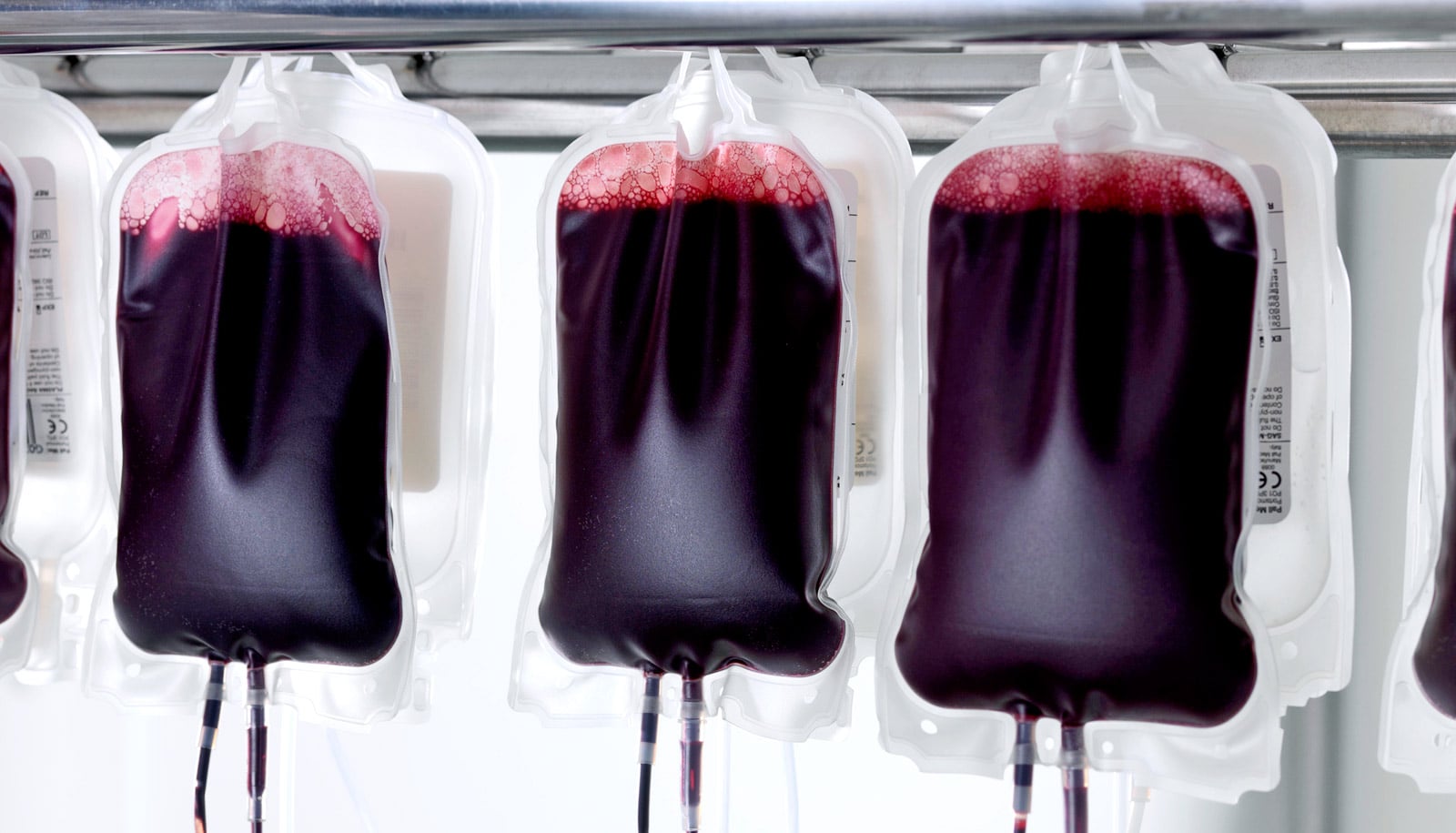For critically ill children needing blood transfusions, older red blood cells are just as effective and safe as fresh ones, a new study shows.
Researchers compared fresh blood stored for up to seven days to older red blood cells stored for nearly four weeks.
Children who suffer from traumatic blood loss, cancer, or sickle cell disease, often require red blood cell transfusions. However, until now, research has been lacking about whether the length of storage time for red blood cells can contribute to organ failure.
The new study, published in JAMA, is one of the largest ever performed in pediatric critical care and may change policies at hospitals that prefer to use fresh red blood cells despite the standard practice among many hospitals of first transfusing the oldest red blood cells in the stored inventory to minimize waste.
“Our research helps to shed light on a controversial aspect of transfusion medicine,” says first co-author Philip C. Spinella, a pediatric critical care researcher and professor of pediatrics in the critical care medicine division at Washington University in St. Louis.
“We now have scientific evidence to reassure physicians that the standard practice of using moderately aged red blood cells is as safe and effective in these children as using fresh red blood cells.”
Blood bank demands
It is common for pediatric hospitals to have policies requiring fresh red blood cells for certain populations of critically ill children, Spinella says. For example, at St. Louis Children’s Hospital, where Spinella treats patients, the preferential use of fresh red cells applies to children less than six months of age, reliant on oxygen machines, or undergoing cardiac surgery.
The randomized study included 1,461 critically ill children, ages 3 days old through 16 years old, who required red blood cell transfusions at one of 50 medical centers in the United States, Canada, France, Israel, and Italy. The researchers evaluated data collected from patients—half girls, half boys—from February 2014 through November 2018.
Half of the children (728) received transfusions with fresh red blood cells stored for less than 7 days, while the other half (733) received transfusions with older red cells stored predominantly from 12 to 25 days.
The researchers then analyzed the risk of new or progressive multiple organ failure in the children over a 28-day period or until the patients were discharged from the hospital or died.
The findings showed that children in both groups experienced similar health outcomes. Of the children who had received fresh red blood cells, 147 (20%) suffered new or progressive organ impairment or death, while the same occurred in 133 (18%) of the children who had received the older red blood cells—a difference that was not statistically significant.
“Unless extenuating circumstances exist, physicians who prefer using fresh red cells may want to reconsider,” says Spinella, director of the university’s Pediatric Critical Care Translational Research Program. “The demand for fresh red cells increases the burden on blood banks that must respond to such requests.”
Older blood transfusions
One of the study’s limitations is that researchers did not evaluate red cells that are 35 to 42 days old, the longest duration allowable in the United States. Also, the researchers examined critically ill children who received low-volume red blood cell transfusions and not those requiring large-volume red blood cell transfusions.
However, Spinella says the study’s relatively large size and geographic diversity allow researchers to apply results to the larger pediatric population.
“This is important because there has been a global interest in determining older red blood cells’ effectiveness in critically ill children,” he says. “These patients are among the sickest and most fragile.”
Funding for the work came from the National Heart, Lung and Blood Institute of the National Institutes of Health; Washington University in St. Louis; the Institute of Circulatory and Respiratory Health of the Canadian Institutes Health Research; the French Ministry of Health Programme Hospitalier de Recherche Clinique; the Quebec Ministry of Health and Social Services; the Groupe Francophone de Réanimation et Urgences Pédiatriques; and the Établissement Français du Sang.


